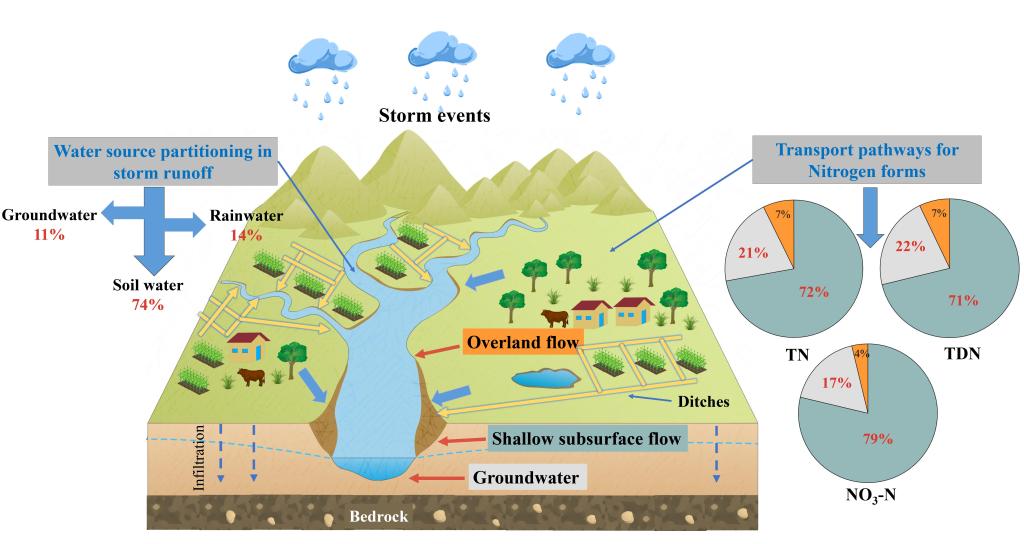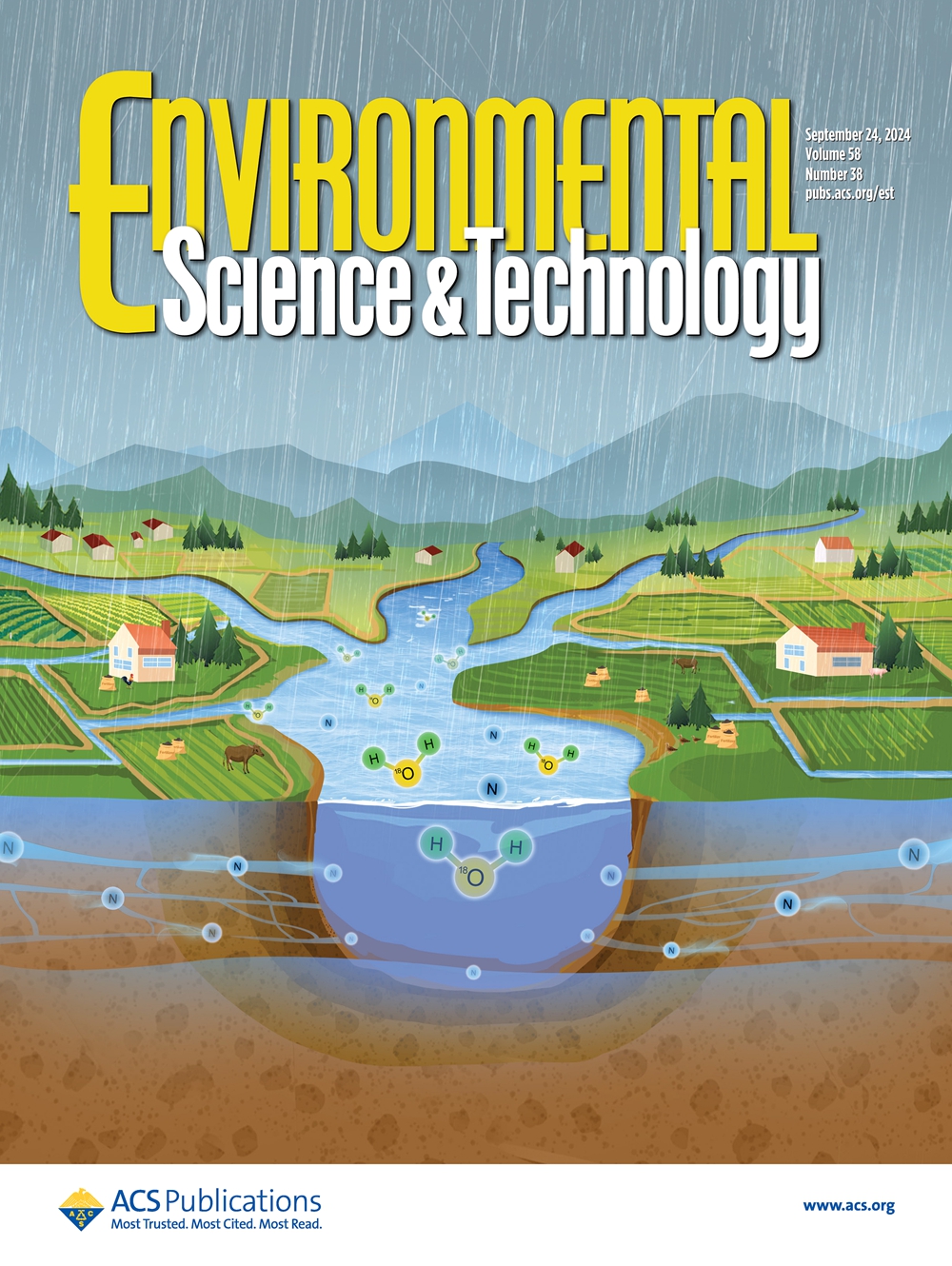南湖新闻网讯(通讯员 王剑 李肖) 近日,我校水土流失过程与生态调控团队在流域硝酸盐输移的水文路径及其驱动机制方面取得进展,在Environmental Science & Technology发表了题为“Transport pathways of nitrate in stormwater runoff inferred from high-frequency sampling and stable water isotopes”的学术论文,并被选为补充封面论文(Supplementary Cover)。
为了满足地球上日益增长的人类对粮食的需求,越来越多的化肥和有机肥被应用到农业景观中。然而,超过半数的农田氮素流失进入空气及附近的水体中,超过了人类可以安全运行的环境阈值(每年73 Tg N)。过度使用肥料导致土壤酸化、空气质量恶化和水生生态系统富营养化,威胁人类引用水安全和水生生物多样性。降雨改变了流域径流来源,使氮素从不同景观转移至受纳水体中,加速了氮素的输出通量。与基流相比,降雨径流更容易激活不同的氮素源区,从而改变氮的通量及其形态。然而,由于雨水径流中水源分配的动态尚不清楚,不同氮形态的运输路径以及降雨响应仍然难以琢磨。
研究团队通过高频原位监测,利用稳定同位素示踪技术,结合贝叶斯混合模型,量化了不同降雨事件下流域径流来源,结合质量平衡方程,揭示了不同形态氮素输移的水文路径及其驱动机制。结果表明:浅层地下水是降雨径流的主要来源,分别贡献了74%的降雨径流和72%、71%和79%的总氮、总溶解氮和硝酸盐。相比之下,地下水贡献了11%的降雨径流和21%、22%和17% 的总氮、总溶解氮和硝酸盐。其余14%的降雨径流可归因于雨水,其中含有的总氮、总溶解氮和硝酸盐要少得多。令人惊讶的是,在暴雨期间,氮素输出的主要形态是硝酸盐,而不是溶解有机氮。前期水分条件和径流特征对暴雨期间的氮素输出负荷有重要影响。研究结果为理解面源污染的形成机制提供了新的见解,为制定有效的流域管理政策来控制河流和地下水中的氮污染提供科学依据。

图1 降雨期间不同形态氮素输移的水文路径

图2 本研究被选为补充封面Supplementary Cover文章
我校王剑副教授为论文第一作者,史志华教授为论文通讯作者。我校博士生李肖、硕士生王磊、师泳泳、肖海兵副教授,苏黎世联邦理工学院Hansjorg Seybold以及James W. Kirchner参与了研究。
【英文摘要】
Storm events can mobilize nitrogen species from landscapes into streams, exacerbating eutrophication and threatening aquatic ecosystems as well as human health. However, the transport pathways and storm responses of different nitrogen forms remain elusive. We used high-frequency chemical and isotopic sampling to partition sources of stormwater runoff and determine transport pathways of multiple nitrogen forms in an agricultural catchment. Bayesian mixing modeling reveals shallow subsurface water as the dominant source of stormwater runoff, contributing 74% of the water flux and 72, 71, and 79% of total nitrogen (TN), total dissolved nitrogen (TDN), and nitrate (NO3-N), respectively. Groundwater, by contrast, contributed 11% of stormwater runoff and 21, 22, and 17% of TN, TDN, and NO3-N, respectively. The remaining 14% of stormwater runoff can be attributed to rainwater, which contains much less TN, TDN, and NO3-N. Surprisingly, during storm events, the dominant nitrogen form was NO3-N rather than dissolved organic nitrogen. Antecedent conditions and runoff characteristics have an important influence on nitrogen loads during storm events. Our results provide insight into hydrological mechanisms driving nitrogen transport during storm events and may help in developing catchment management practices for reducing nitrogen pollution in aquatic ecosystems.
原文链接:https://doi.org/10.1021/acs.est.4c02495
审核人:史志华